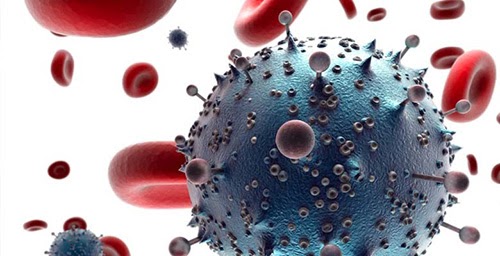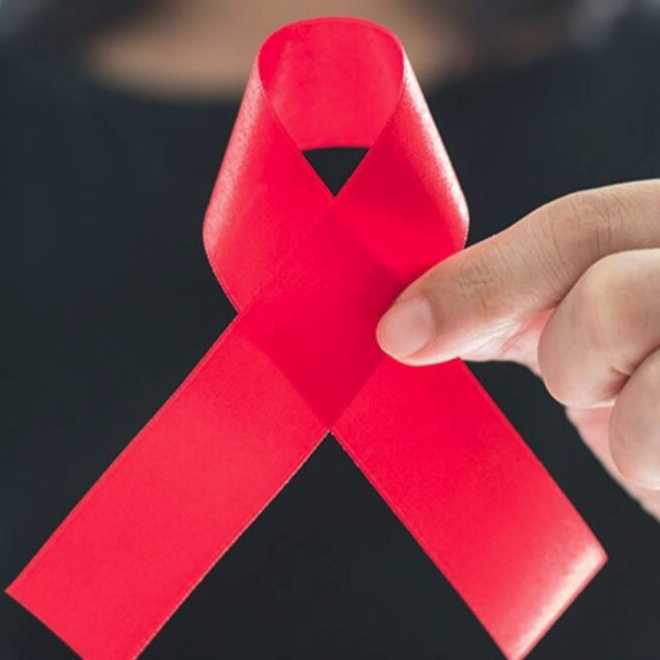HIV (Human Immunodeficiency Virus) is a virus that damages the immune system by attacking CD4 cells, a type of immune cell known as T cells, and destroys them. The more HIV destroys CD4 cells, the more the body becomes susceptible to various diseases and cancers. HIV is transmitted through bodily fluids such as blood, semen, breast milk, and vaginal and rectal fluids, and it is not transmitted through air or water.
Since this virus enters the DNA of cells, the disease is lifelong, and currently, there is no cure for it. An individual infected with HIV without undergoing treatment will likely develop a condition called Acquired Immunodeficiency Syndrome, or AIDS. AIDS is the most advanced stage of the disease, which may develop in people infected with HIV, but not all individuals with the virus necessarily develop it. As mentioned earlier, HIV destroys CD4 cells. The normal range of these cells in healthy adults typically varies from 500 to 1600 cells per cubic millimeter. When the CD4 cell count drops to 200 cells per cubic millimeter in individuals with HIV, it indicates the development of AIDS.
At this stage, the immune system is severely damaged and weakened, and is no longer capable of fighting off most diseases and infections (Read more here). The infected individual becomes vulnerable to a wide range of diseases such as:
- Pneumonia
- Tuberculosis
- Oral Thrush, a fungal disease in the mouth or throat
- Cytomegalovirus (CMV), a type of herpes virus
- Toxoplasmosis, a brain disease caused by a parasite
- Cryptosporidiosis, a disease caused by an intestinal parasite
- Cancer, including Kaposi’s Sarcoma (KS) and Lymphoma
Shortened life expectancy is not necessarily related to the disease itself, but it occurs in the case of untreated disease and the complications arising from the weakened immune system. Antiretroviral medications can prevent the progression to AIDS.
Transmission of the HIV Virus
As mentioned, the virus exists in bodily fluids and is transmitted through them. Some of the ways in which HIV is transmitted from one person to another include:
- Vaginal or anal sex (the most common mode of transmission)
- Sharing needles and syringes in injectable drug use
- Sharing tattoo equipment without sterilizing them
- From an infected mother to the fetus (before or during birth)
- During breastfeeding
- Through testing or chewing food for a baby before feeding them

The virus can also be transmitted through blood transfusions or organ and tissue transplants. In theory, the transmission of the HIV virus can occur through oral sex (only if there is gum bleeding or an open wound in the person’s mouth) or an open wound or mucous membrane of an individual infected with HIV. However, contrary to popular belief, HIV is not transmitted through the following methods:
- Skin-to-skin contact
- Hugging, shaking hands, and kissing
- Through air or water
- Sharing food or drink containers
- Saliva, tears, or sweat (unless mixed with the blood of an infected individual)
- Sharing toilets, towels, or bedding
- Insect bites, including mosquitoes
What Causes HIV?
HIV is a type of virus associated with chimpanzees in Africa. Scientists believe that the virus (SIV) was transferred to humans when people consumed the meat of chimpanzees carrying this virus. Over several decades, HIV spread across Africa and from person to person, eventually becoming widespread globally. The HIV virus was first discovered in human blood samples in 1959.
What Tests Are Used to Diagnose HIV?
- Antibody-Antigen Tests in Diagnosing HIV
Antibody-antigen tests are the most common diagnostic test and can usually detect the virus 18–45 days after an individual has been exposed to HIV. These tests look for antibodies (proteins the body produces in response to infection) and antigens (parts of the virus that activate the immune system) in the blood.
- Antibody Tests in Diagnosing HIV
These tests only check for antibodies in the blood and can detect the virus 23 to 90 days after transmission. Antibody tests are performed using blood samples or oral swabs and do not require any special preparation.
- Nucleic Acid Tests (NAT) in Diagnosing HIV
This test is very expensive and is not used for general screening. It is typically used for individuals with early symptoms. In this test, instead of looking for antibodies, the actual presence of the virus is detected. It takes 5 to 21 days for HIV to be detectable in the blood, and the results are usually confirmed with an antibody test.
What is the HIV Window Period?
The window period refers to the time between exposure to HIV and when it becomes detectable in the blood. In most people, detectable antibodies appear 23 to 90 days after transmission. If an individual gets tested during the window period, the test may return a negative result, even though the person is infected and can transmit the virus to others during this time.
If someone believes they’ve been exposed to HIV but gets a negative result during this period, they should retake the test a few months later to confirm the result and should use condoms or other preventive methods during this time to prevent transmission. In such cases, Post-Exposure Prophylaxis (PEP) is often prescribed, which should be taken within 72 hours to prevent the onset of HIV.
Early Symptoms of HIV
Typically, within a few weeks after contracting HIV, an acute infection develops. Many people experience symptoms after contracting the virus or within the first month, but these are often misdiagnosed as the flu or other seasonal viral infections. These symptoms generally occur intermittently and can range from mild to severe and last from a few days to several weeks. Early symptoms may include:
- Fever
- Chills
- Swollen lymph nodes
- General body aches
- Rashes
- Sore throat
- Headache
- Nausea
- Stomach discomfort
However, even if the infected person does not have symptoms during this period, they can still transmit the virus to others due to the high viral load in their blood.
After about a month, HIV enters the clinical latency stage, which can last for several years to several decades. Some people show no symptoms during this time, while others may show mild or non-specific symptoms. Non-specific symptoms may include headaches and other pains, swollen lymph nodes, recurrent fevers, night sweats, fatigue, nausea, vomiting, diarrhea, weight loss, rashes, recurrent oral or vaginal yeast infections, pneumonia, and Shingles (Read more here). Like the early stages, HIV is also transmissible during this period.
The infection is only diagnosed through testing. Therefore, if someone experiences such symptoms and believes they may have been exposed to HIV, it is important to get tested.
Symptoms of HIV during this stage may be intermittent or progress rapidly. Disease progression can be significantly slowed with timely treatment. With ongoing antiretroviral treatment, chronic HIV can last for decades without progressing to AIDS.

Sources:
healthline.com, webmd.com












Our Customers' Comments
No comments registered